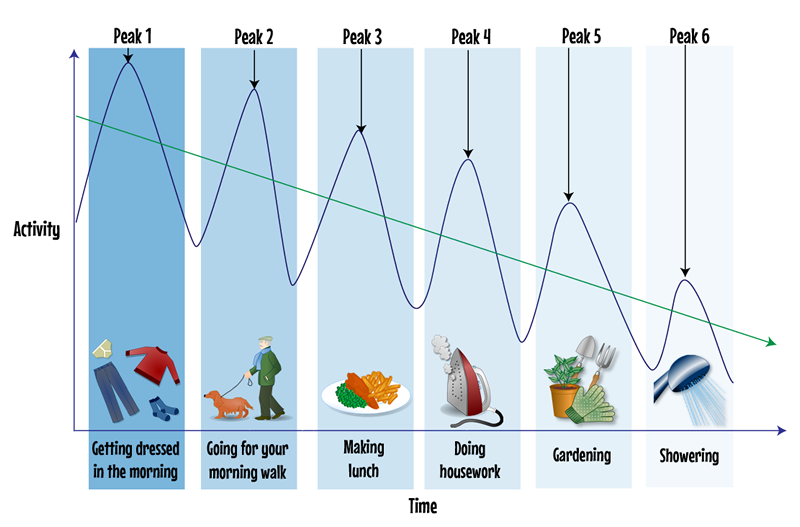
You can see that sometimes you are feeling well and can do a lot of tasks. Represented by the upward lines to each peak = over activity. If you have done too much too soon you can run out of energy and the effort makes you tired and fatigued. This is represented by the downward lines to the trough = under activity.
These terms are often used to describe the behaviours people living with a long term health condition can develop to manage their day-to-day activities.
- They to keep going in the same way that they always have. People can forget to take into account the symptoms they are now living with and that these can vary from one day to the next.
- People’s habits, routines, and ways of doing things can be a struggle to change. This is the challenge of putting pacing into practice.
- Remember – Pacing is about bringing in changes that help you stay in control of how you feel.
People like you who are living with asthma can experience these peaks and troughs at different times. For example if you have had a sleepless night you may feel low in the morning. You will probably feel better after you have taken your medications and inhalers, and feel better and stronger as the day goes on. Some people describe their own asthma as a roller coaster, especially after an attack or infection. This is when pacing can really help.





